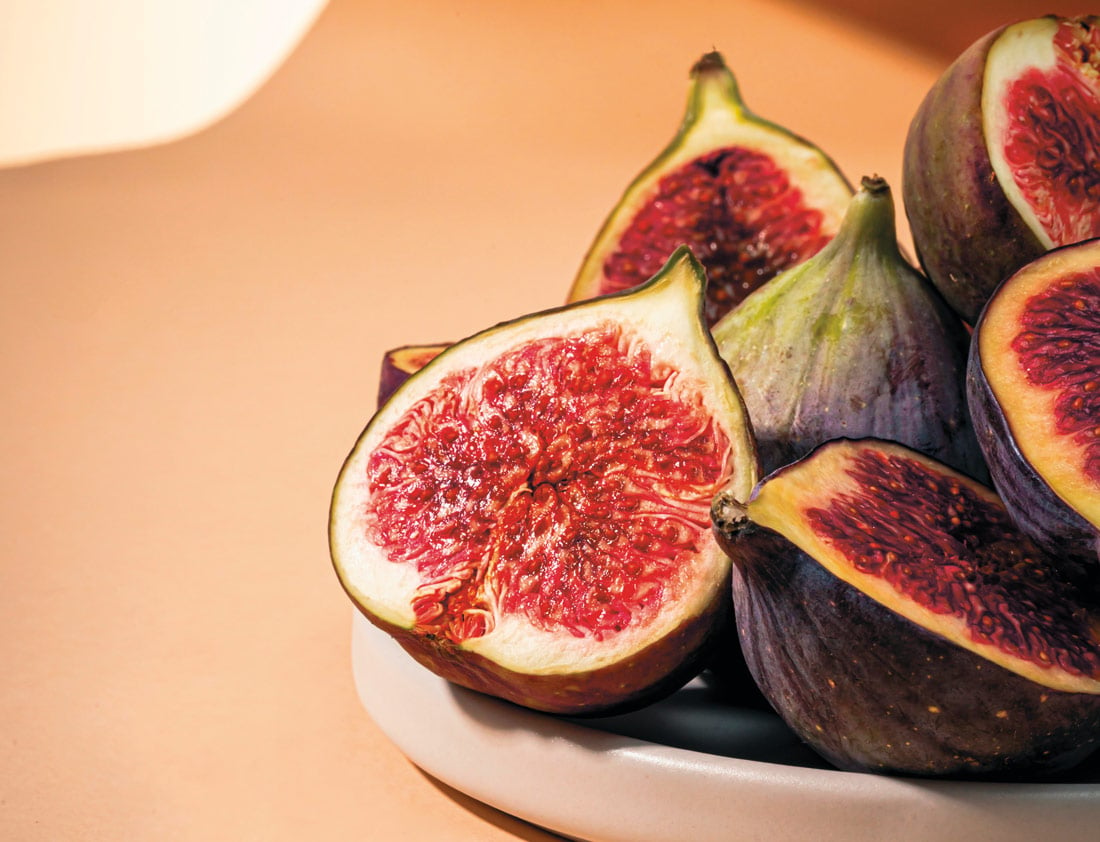Scott Paton, head chef of Àclèaf in Plymouth, reveals his hero seasonal ingredient and shares a few tips on how to prepare figs at home
It’s easy to think of succulent, aromatic figs as exotic fruits grown in the sun-drenched Mediterranean, yet some of the best I’ve tasted hail from the fields of Devon and Cornwall – we’ve even got a tree in the grounds of Boringdon Hall.
How to source figs
Figs need a lot of sunlight to ripen, so fruit grown in the UK (usually in a greenhouse) is ready to eat from around the end of August until early October.
You may find English varieties in the supermarket, but your best bet is to head to your local farm shop. At Àclèaf, we source them from producers across Devon and Cornwall.
How to prep figs
Give the figs a good wash in cold water. If you can, get your hands on the fig leaves too. Their grassy flavour makes an interesting addition to a homemade crème anglais – simply wash the leaves, bash them in a pestle and mortar, leave them to steep in the crème anglais for 30 minutes and then remove the leaves before serving. They add a beautiful fragrance and flavour.
I also use the leaves to make an oil, which I use in winter with venison. It adds a grassy note that’s preferable to herbs, which can overpower the meat’s delicate flavour.
How to serve figs
I like to pair figs with fatty meats such as pork and duck. Try serving roast pork with homemade fig chutney, or pan-fried duck breast with grilled figs glazed in honey.
I’ve been working on a rabbit terrine dish for Àclèaf, which I’ll serve with a fig puree made using the fruit, sugar, spiced rum and a touch of vinegar. When making the puree, anything that doesn’t pass through the sieve is reserved, chilled and served with a soft cheese such as brie.
My favourite way to eat figs at home is grilled with a little brown sugar and served with good-quality greek yogurt, granola and a light grating of orange zest.












